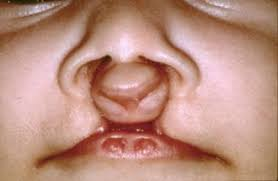Van der Woude syndrome (VWS) is a genetic condition that is notably present in 1–2% of patients with cleft lip and/or palate.
Table of Contents
Introduction
Van der Woude syndrome (VWS) is a genetic condition that is notably present in 1–2% of patients with cleft lip and/or palate. Characterized by the presence of lip pits, which are small sinuses associated with minor salivary glands, VWS manifests alongside other dental and orofacial anomalies. This article aims to explore the critical aspects of Van der Woude syndrome, including its inheritance pattern, clinical features, and associated dental implications.
Overview of Van der Woude Syndrome
Genetic Basis and Inheritance Pattern
Van der Woude syndrome is classified as an autosomal dominant condition, meaning that only one copy of the mutated gene can cause the syndrome in an individual. This genetic variation is typically linked to mutations in the *IRF6* gene, which is crucial in orofacial development.
- Autosomal Dominance:
- Affected individuals usually inherit the condition from an affected parent.
- However, it can also occur due to a new mutation in cases where there is no family history of the disorder.
- Variable Penetrance:
- Despite being autosomal dominant, VWS demonstrates variable penetrance, which means not all individuals with the mutation will exhibit the symptoms. Some may have mild manifestations or remain asymptomatic.
Clinical Features of Van der Woude syndrome VWS
Lip Pits
One of the hallmark features of Van der Woude syndrome is the presence of lip pits, which may vary in size and depth.
- **Characteristics of Lip Pits**:
- Typically located on the lower lip but can also occur on the upper lip.
- They are often asymptomatic but can sometimes become infected or cause discomfort.
Cleft Lip and/or Palate
VWS is associated with cleft lip and/or palate, which varies in severity among affected individuals.
- Cleft Lip:
- Can range from a small notch to a complete separation of the lip.
- Cleft Palate:
- May present as a soft palate cleft or extend into the hard palate, impacting feeding, speech, and hearing.
Dental Anomalies
In addition to lip pits and orofacial clefts, there are notable dental implications in Van der Woude syndrome.
- Missing Second Premolars:
- Approximately 10% to 20% of individuals with VWS exhibit agenesis of the second premolar teeth.
- This can affect dental alignment and occlusion, potentially leading to orthodontic issues.
- Potential for Other Dental Abnormalities:
- Other anomalies may include variations in tooth size and shape, as well as increased susceptibility to dental decay due to difficulties in cleaning.
Diagnosis and Management
Diagnostic Criteria
Diagnosis of Van der Woude syndrome may involve a combination of clinical evaluation, family history assessment, and, in some cases, genetic testing.
- Clinical Evaluation:
- A thorough examination of the oral cavity and facial structure is necessary to identify key features such as lip pits and clefts.
- Genetic Testing:
- Testing for mutations in the *IRF6* gene can confirm a diagnosis, particularly in cases with ambiguous clinical presentations.
Management Strategies
Management of VWS is multidisciplinary, incorporating various healthcare professionals:
- Surgical Interventions:
- Surgical correction of cleft lip and/or palate is often performed during infancy or early childhood.
- Ongoing Dental Care:
- Regular dental check-ups and orthodontic evaluation are important in preventing complications arising from dental anomalies.
- Speech Therapy:
- Many patients benefit from speech therapy, especially if articulation issues arise from cleft palate.
Conclusion
Van der Woude syndrome, though relatively rare, presents significant clinical challenges and implications, especially regarding cleft lip and palate, as well as dental anomalies. Understanding this genetic condition is essential for accurate diagnosis, appropriate management, and effective treatment planning. By fostering a multidisciplinary approach, healthcare professionals can enhance the quality of life for individuals affected by this syndrome. Continued research into the genetic mechanisms of VWS will be pivotal in improving outcomes and developing targeted therapies in the future.
Tags
syndromes
